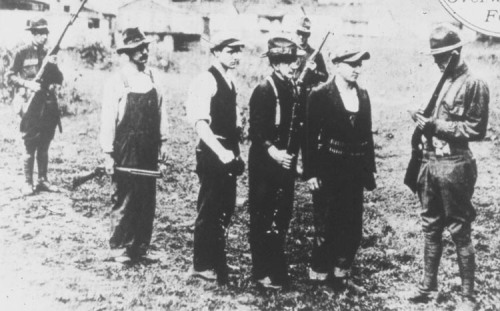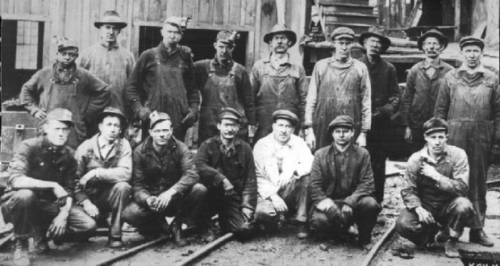The Battle of Blair Mountain Around the turn of the century in West Virginia, the coal companies con
The Battle of Blair Mountain Around the turn of the century in West Virginia, the coal companies controlled everything. They owned the towns, had their own private militias, and even paid local law enforcement officers and politicians. However, the coal companies control over the state began to wane when the miners started to unionize. One of the last counties to unionize was Logan Country, located in the southwest of the state. In 1920, agents of the Baldwin Felts Detective Agency arrived in the independent town of Matewan to evict several miners families and arrest the local police chief, Sid Hatfield. Hired by the coal companies, the men were essentially there to strong arm the town, which was staunchly pro-union. Days before, the coal companies had tried to bribe the local mayor into placing 5 machine guns on the roofs of the town buildings "in order to maintain order" among the coal miners. The agents threw out several families from their homes at gunpoint. They were met by Chief Hatfield and his deputies, who told them to get out of town. A gunfight ensued, resulting in the deaths of ten men, 7 of which were Baldwin Felts agents, including two of the brothers of the company’s founder, Albert and Lee Felts. The town mayor, Cabell Testerman, was also killed.Police Chief Sid HatfieldSid Hatfield was cleared of murder charges, which was seen as a great victory against the coal companies. Bolstered by the victory, Sid Hatfield and a union organizer named Bill Blizzard organized the miners of Logan County into a union, which quickly went on strike. The coal companies responded by hiring scabs and strike breakers. On August 1st, 1921 Sid Hatfield was called to McDowell County to stand trial for sabotaging a mine. While walking up the courthouse steps with his friend Ed Chambers and their wives, a group of Baldwin Felts agents opened fire, killing Hatfield and Chambers. Chambers, who was only wounded, was executed by one of the agents with a gunshot to the back of the head. Enraged, the miners took up arms and organized to forcefully break the power of the coal companies. They were joined by thousands of miners from other counties who were sympathetic to their cause. Altogether, the miners formed an army consisting of around 10,000 men. Its is no exaggeration that they were an army, many of the miners were World War I veterans who had seen combat in Europe. Armed with hunting rifles and shotguns, they organized battalions and regiments, assigned commanders, set up command posts, set up hospitals and mess tents, dug trenches, and did everything that a well organized army would do. Their opposition, a eclectic group of coal company militias, guards, state and local police, and Baldwin Felts agents, only numbered around 3,500, however they were well armed with machine guns and other military weapons.On August 25th, the two sides met, and a battle raged in the West Virginia mountains for almost a week. In the ensuing battle, 50-100 miners were killed, around 30 men on the side of the coal companies were killed. Hundreds more were wounded on both sides. The battle ended when Federal troops arrived on September 2nd. 985 miners were indicted for treason and murder, but in the end none were charged. Overall the battle was a victory for the coal companies in the short term, who clamped down even harder on the miners. In the long term, the battle was a victory for the miners, as the battle rose awareness of the coal miners plight. -- source link
#history#coal mines#coal mining#west virginia#union#labor strikes#labor history


